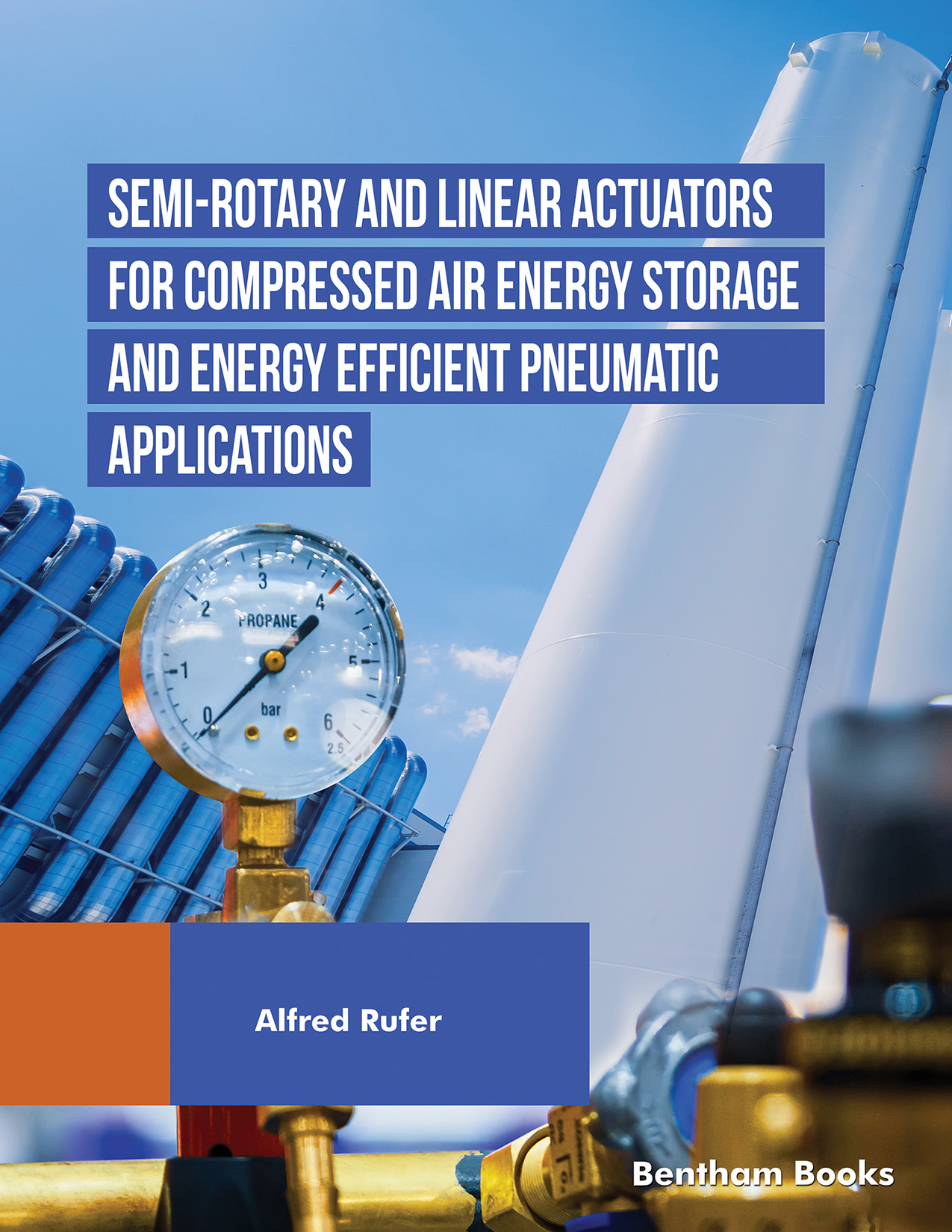Preface
In the context of the many challenges to society related to energy and environmental issues, the utilisation and the storage of electrical energy appear at a front level of needed industrial developments, accompanied by academic research and other investigations.
The technology of compressed air is a simple and reliable technique widely used in the sector of industrial handling and actuators but has recently become an attractive means for energy storage in different forms. The main argument behind the use of compressed air energy storage is given by the use of simple mechanisms issued from reversible physics in comparison to electrochemical principles, where the calendric and cycle ageing mechanisms have been the centre of questions for many years. The question of recycling elementary materials is another aspect related to the battery industry and public services.
Regarding the sustainability aspects of the use of energy, the general question of efficiency is now the centre of many considerations worldwide, and more and more studies and comparisons are made at the system level, where the different individual or cascaded energetic transformations are evaluated. A strong example comes from the automotive sector, where the classic ICE (Internal Combustion Engine) vehicles with their reservoirs are compared to Hydrogen powered vehicles with fuel-cells, or further with BEV (Battery Electric Vehicles).
Back to the technique of compressed air, the industrial world uses from long time pneumatic actuators for their simplicity, reliability and low costs. But regarding the energetic balance, this technology presents, in its actual form, many disadvantages that can be qualified as energetic aberrations. And the use of pneumatic devices for the transformation from compressed air energy to mechanical and electrical power must be reconsidered.
This book tries to give answers to the questions of the energetic efficiency of pneumatic devices and tries to use new arrangements for an application to energy storage. When speaking about energy storage, the question of the reversibility of the transformations or energy flows is also addressed. Even when the actual or classical industrial pneumatic devices are not foreseen for an operation as compression stages, the principle of using them as such is considered, and will need adaptations of those devices, especially at the level of their sealing elements.
The compressed air energy storage principle is used in the industrial world in the form of air reservoirs used as buffers feeding the pneumatic actuators and motors. Here the buffering function serves to power devices with a strong flow of pneumatic energy, and normally, pressure regulating valves are rarely used. But several proposals are made in the sense of using compressed air stored at a higher level of pressure and with an adaptation element to the application. The properties of such pressure reduction elements are also discussed in this book.
Further in the direction of realizing compressed air energy storage, a low pressure storage system called the underwater compressed air energy storage (UWCAES) is described and represents one of the ways for storing energy and using pneumatic converting elements for which the actually used pressure level fits the UWCAES system.
Alfred Rufer
Ecole Polytechnique Fédérale de Lausanne (EPFL)
Lausanne, Switzerland

